Map Of Lao Cai: Your A To Z Guide To Vietnam’s Northern Wonderland
The Northwestern provinces of Vietnam have never ceased to enchant travel enthusiasts. The wild beauty of nature intertwined with rich cultural traditions, vibrant ethnic costumes, and distinctive local cuisine continues to captivate visitors from all over. Among these destinations, Lao Cai stands out as a true gem. But do you know which places in Lao Cai are the most beautiful today? Beyond Sapa, this province still harbors numerous mystical treasures awaiting discovery.
Geography & Administrative Divisions
Located at the intersection of Northeast and Northwest Vietnam, Lao Cai is renowned for its majestic natural landscapes and the rich cultural diversity of its ethnic minorities. Thanks to its unique geographical position, Lao Cai serves as a gateway to iconic destinations such as Sapa, Fansipan, and many charming ethnic villages. Beyond its natural beauty, the province also offers unique cultural experiences—from flavorful local cuisine to vibrant traditional festivals.
Here are some key geographical and administrative facts about Lao Cai:
Total area: approximately 6,364 km²
Population: around 730,430 people
Topography: predominantly mountainous, featuring rugged highlands, terraced valleys, and the Hoang Lien Son range, including Fansipan, the highest peak in Vietnam
Borders: shares an international border with Yunnan Province (China) to the north. Domestically, it borders Ha Giang (east), Lai Chau (west), and Yen Bai (south).
Region: Northwest Vietnam
Administratively, Lao Cai includes:
1 provincial city: Lao Cai City (provincial capital)
8 districts: Bac Ha, Bao Thang, Bao Yen, Bat Xat, Muong Khuong, Sa Pa, Si Ma Cai, Van Ban
Climate & Best Time To Visit
Lao Cai offers something special in every season, each with its own charm and reason to visit.
Spring (February–March): As spring arrives, plum and peach blossoms bloom across the region, creating a fresh and romantic landscape. This is the ideal time for nature lovers and photography enthusiasts to capture the vibrant beauty and breathe in the crisp mountain air.
Autumn (September–October): Golden rice terraces stretch across the hills, glowing under the sunlight. This is when Lao Cai is at its most picturesque, making it a favorite for trekkers and travelers seeking stunning natural scenery.
Late Autumn–Early Winter (Late November): The weather turns cool and misty, wrapping the town in a dreamlike fog. It’s a wonderful time to enjoy peaceful walks and the cozy mountain atmosphere.
Winter (December–January): Sapa becomes a rare winter wonderland in tropical Vietnam. Light snowfall occasionally covers the landscape in white, offering unforgettable and unique experiences for those chasing a touch of snow.
Top Attractions & Natural Wonders
Sapa Town
If you’ve decided to travel to Lao Cai, make sure to visit Sapa at least once to discover its breathtaking landscapes. Despite many years of development, this misty town has retained its original charm, continuing to enchant countless visitors.
Located at an altitude of about 1,500 to 1,800 meters above sea level, Sapa Town features both pristine primary forests and modern tourist infrastructure. A trip to Sapa offers the chance to explore stunning natural scenery, visit ancient and captivating ethnic villages, and check in at many unique attractions in this famously foggy city.
Must-Visit Attractions in Sapa:
Sapa Stone Church: This iconic structure is located right in the heart of Sapa Town. Built in 1895, it is the most well-preserved ancient building in the area. Visitors will be amazed by its unique Romanesque architecture, featuring graceful, elegant lines and a timeless charm.
Sapa Lake: Situated in the town center, Sapa Lake is one of the area’s most attractive and interesting destinations for tourists. Here, visitors can admire the poetic and peaceful natural scenery and even take part in meaningful and unique local festivals.
Y Ty Commune
Y Ty is considered a captivating destination highly sought after by adventure travelers. Located in Bat Xat District at an altitude of 2,000 meters above sea level, Y Ty boasts two prime seasons that visitors shouldn’t miss. The first is the golden season from late August to early September, when terraced rice fields glow with ripened grains. The second is the cloud-hunting season at the end of the year, when soft white clouds drift like giant cotton balls across the sky.
Although the journey to Y Ty can be challenging—with rugged, difficult roads—many tourists are eager to conquer this famous spot. The path may be tough, but once you arrive, you’ll be overwhelmed by the majestic and otherworldly landscapes that await.
O Quy Ho Pass
Located between the provinces of Lao Cai and Lai Chau, O Quy Ho Pass is not only a vital transportation route but also one of the most breathtaking mountain passes in Vietnam. With its sharp, winding hairpin turns, the pass offers an exhilarating and thrilling experience for those who dare to conquer it.
From the top of the pass, you can admire the majestic beauty of Sapa, where layers of white clouds float gently, creating a dreamlike, fairy-tale scene. More than just a scenic stop, O Quy Ho Pass is a perfect place to capture stunning moments—ideal for photography lovers and nature explorers alike.
Fansipan Mountain
Fansipan is an unmissable symbol in any journey to explore Lao Cai. Standing at 3,147 meters, it is not only the highest peak in Vietnam but also proudly known as the “Roof of Indochina.” A trip to Fansipan offers a chance to immerse yourself in the majestic nature and breathtaking scenery of the Northwest mountains, with fresh and cool weather all year round.
To reach the summit, you can either trek through the forest or take the modern cable car system, which saves time and allows you to enjoy the stunning views along the way. Standing at the top of Fansipan, you’ll be surrounded by a sea of floating clouds and have a panoramic view of the towering mountains. This is truly a destination you shouldn’t miss when visiting Lao Cai.
Ky Quan San Mountain (Bach Moc Luong Tu)
Ky Quan San is the fourth highest mountain in Vietnam, located in the majestic Hoang Lien Son mountain range, straddling the border between Lai Chau and Lao Cai provinces. It boasts pristine, majestic beauty and offers a thrilling challenge for nature lovers and adventure seekers.
Conquering Ky Quan San (Bach Moc Luong Tu) is a demanding journey that requires good physical fitness, mental resilience, and strong determination. However, those who take on the challenge will be rewarded with awe-inspiring natural landscapes, fresh mountain air, and a deep sense of pride in having conquered one of Vietnam’s highest peaks.
Muong Hoa Valley
Nestled in the heart of Lao Cai, Muong Hoa Valley is one of the region’s most iconic tourist destinations, attracting millions of visitors each year. Blessed with breathtaking natural beauty, the valley is surrounded by rolling mountain ranges and features endless stretches of terraced rice fields.
A highlight of the valley is the Muong Hoa Stream, which flows through the landscape alongside the Sapa Ancient Rock Field—a mysterious site containing hundreds of stones engraved with unique carvings that continue to intrigue researchers and tourists alike. Visitors to the valley can also enjoy a variety of immersive activities such as trekking, camping, exploring ethnic minority villages, and savoring the region’s unique mountain cuisine.
Ham Rong Mountain
Located right next to Sapa town, Ham Rong Mountain stands out with its majestic landscapes, cool climate, and rich vegetation. What makes this mountain special is the harmonious blend between the wild beauty of the natural forest and man-made features such as flower gardens, suspension bridges, and artistic sculptures.
From the mountain’s summit, you can enjoy a panoramic view of dreamy Sapa town and the lush terraced rice fields—a sight that’s sure to leave you with unforgettable memories. The hike to the top of Ham Rong Mountain takes around one hour, so be sure to prepare your physical strength and get ready for an exciting adventure!
Cat Cat Village
Nestled at the foot of the Hoang Lien Son mountain range, Cat Cat Village lies quietly under the embrace of Mother Nature and is one of the must-visit check-in spots on any trip to Lao Cai.
As one of the oldest H’Mong villages in Sapa, Cat Cat charms visitors with its stone-paved paths, clear streams, cool waterfalls, and traditional wooden houses. Travelers can enjoy ethnic cultural performances, rent traditional costumes for photos, and shop for handmade local crafts.
Ta Van Village
The highlight of Ta Van Village is the cultural convergence of the H’mong, Red Dao, and Giay ethnic groups, offering visitors fascinating experiences through unique customs, vibrant traditional festivals, and distinctive local cuisine. Here, you can not only admire the breathtaking natural scenery, but also take part in activities such as trekking, visiting traditional craft villages, and exploring picturesque trails that look like scenes from a painting.
Lung Po Flagpole
Lung Po Flagpole is a monument that draws significant attention from visitors to Bat Xat. Construction began on March 26, 2016, covering an area of 2,100 square meters, to honor the silent sacrifices and heroic contributions of steadfast soldiers. The flag, measuring 25 square meters, symbolizes not only the 25 ethnic groups in Lao Cai but also represents the resilience, determination, and solidarity of Lao Cai’s youth in continuing the proud traditions of the nation to build and protect the country.
Hoang A Tuong Palace
Hoang A Tuong Palace, also known as the “Cat King’s Mansion” or Hoang A Tuong Ancient House, is a national historical site located in Bac Ha Town. It was the residence and workplace of Hoang Yen Chao and his son Hoang A Tuong, who ruled the northwestern border region in the early 20th century.
Constructed between 1914 and 1921, the palace spans a total area of 10,000 square meters. Its architecture is a unique blend of French colonial style and traditional Tay ethnic design.
More than just an architectural gem, Hoang A Tuong Palace holds immense historical and cultural value. It stands as a testament to the wealth and power of the Hoang family and preserves many valuable artifacts that reflect the lifestyle of ethnic minorities in the Northwest during the early 20th century.
Bac Ha Weekly Market
Bac Ha Market is a well-known destination for travelers and no longer unfamiliar to most tourists. You’ve probably heard at least once about the bustling and lively atmosphere of this most vibrant market in Lao Cai. Bac Ha Market offers a wide range of goods, especially unique handicrafts. It also serves as a gathering place for various ethnic groups such as the Tay, Nung, and Hmong.
The market is held only once a week, every Sunday, and typically wraps up by the afternoon. It is located on a gently sloping hill that has been home to the market for generations. When visiting this famous market, tourists will find large stalls selling all sorts of goods for daily life. Especially striking is the sight of young women in colorful traditional dresses and tall young men mingling in the lively crowd.
Sapa Love Market
Love Market is one of the most unique cultural traditions of the ethnic groups in Northern Vietnam—something you won’t find anywhere else. Although it’s called a “market,” there’s no buying or selling involved. Instead, it’s a special occasion where young men and women gather to sing, dance, and enjoy each other’s company after the spring market fair.
Similar to the Khau Vai Love Market in Ha Giang and the Moc Chau Love Market in Son La, the Sapa Love Market used to be held only once a year, shortly after the Lunar New Year. However, today it takes place every Saturday evening, right in the square in front of Sapa Stone Church.
Cuisine & Local Specialties
Thang Co
When talking about the cuisine of Vietnam’s Northwest highlands, chances are you’ve heard of Thang Co. This is a signature dish of Lao Cai, widely enjoyed across the region and especially loved by tourists visiting this mountainous land.
Thang Co in Bac Ha is traditionally made from horse meat and organs, combined with a variety of local spices to create a truly unique flavor. Nowadays, to cater to different tastes, locals also prepare Thang Co using goat or beef, adding diversity to this iconic dish.
Pink Pho
Pink Pho (Phơ hong) is made from pink upland brown rice, a rare specialty grown only in the Bac Ha region. The rice must be soaked for 5 to 10 hours depending on the season, then ground, filtered into a liquid, steamed into sheets, and finally cut into noodles—all by hand. The resulting noodles are soft, smooth, and free of preservatives, so they’re typically consumed within the day.
The most common dish made with these noodles is sour pho (pho chua), a mixed noodle dish. A typical bowl includes pink pho noodles, char siu-style pork, fresh herbs, pickled cai meo greens, crushed peanuts, and a tangy sauce made from fermented soybean, mac khen, cardamom, ginger, sautéed chili, and chili paste.
Five-colored Sticky Rice
As a traditional dish of the Nung ethnic group, five-colored sticky rice is as visually striking as its name suggests. The sticky rice is dyed using natural leaves and forest fruits, creating vibrant colors while remaining safe and healthy to eat. This Lao Cai specialty pairs well with grilled meats or roasted sesame salt.
Smoked Buffalo Meat
Anyone who visits Lao Cai without trying smoked buffalo meat (Thit trau gac bep) is truly missing out! This dish is prepared using the traditional method of the Black Thai ethnic group—buffalo meat is marinated with spices, then hung above the kitchen fire for a long period, creating its signature rich and smoky flavor.
With a dark brown exterior and tender red meat inside, smoked buffalo meat offers a unique taste journey—sweet, sour, and spicy notes all blend together in one bite. It’s often enjoyed with ruou can (fermented rice wine), giving you a true taste of highland culture.
Cap Nach Pork
Have you ever heard of cap nach pork (carried-under-arm pig)? This unique name comes from the image of ethnic minority people in Lao Cai carrying small pigs under their arms when heading to the market.
These pigs are raised naturally, roaming freely in gardens or forests to forage for food. As a result, their meat is firmer, leaner, and more flavorful compared to industrially raised pigs. Locals in Lào Cai prepare this specialty in various ways—steamed, grilled, or fried—but the most iconic method is roasting the whole pig over a charcoal fire.
Sapa Salmon
Sapa salmon is one of the most renowned specialties of Lao Cai, celebrated for its fresh flavor and high nutritional value. Thanks to Sapa’s ideal temperate climate, the salmon here grows strong, with firm, fatty, and sweet-tasting meat. It can be prepared in various ways such as sashimi, salad, or fragrant grilled salmon.
However, salmon hotpot is the true highlight. The rich, subtly sweet broth made from salmon bones, combined with fresh greens, creates a perfect meal—especially comforting on chilly mountain days.
Khau Nhuc
Originating from Chinese cuisine, khau nhuc has been creatively adapted by the locals of Lao Cai to suit the regional palate. This dish features an eye-catching dark amber hue and is made from thick cuts of pork belly with a balanced layer of lean and fat. The meat is marinated with flavorful spices and then slowly braised until tender. Served with steamed rice, it offers a rich and satisfying taste that captures the essence of local comfort food.
Bac Ha Corn Wine
Unlike the Dao people, the H’mong brew their traditional liquor using plump, golden corn kernels. Once fermented, the resulting spirit releases an intense, fragrant aroma that is both rich and inviting. This corn wine is considered one of the three most famous types of liquor in the Northwest highlands of Vietnam—a must-try for any visitor exploring Lao Cai.
Lao Cai Sticky Rice Cake (Banh day)
Lao Cai Sticky rice cake has its own unique charm. Made from glutinous rice that is carefully washed, pounded until smooth, and shaped into small round cakes, it’s typically enjoyed with sesame salt or filled with a sweet or savory stuffing. This traditional treat makes for a delightful local dessert.
Chestnut Cake
This cake is not only a popular Sapa specialty often brought home as a gift by travelers, but also a delightful culinary experience of the highlands. Sapa chestnut cakes are round, with a thin wheat flour crust and a filling made of mashed chestnuts, butter, and mung beans.
The cakes are pan-fried until golden on both sides, then topped with fragrant roasted sesame seeds. When eaten, diners can enjoy the crisp, aromatic crust paired with the mildly sweet and rich filling. They’re best enjoyed warm, making the early morning highland markets the perfect place to try them fresh.
Culture & Festivals
Ethnic Diversity
Lao Cai is home to more than 25 ethnic groups, with ethnic minorities making up the majority—around 64.09% of the province’s population. Prominent ethnic minorities include the Hmong, Tay, Dao, Giay, Nung, as well as smaller groups such as the Phu La, San Chay, Ha Nhi, and La Chi. Each group has its own unique culture, customs, and traditions, creating a rich and diverse cultural tapestry for Lao Cai.
Hmong People: Known for the Gau Tao Festival, vibrant traditional costumes, and handicrafts such as weaving and embroidery.
Dao People: Famous for the Fire Dance Festival, intricate costumes with unique patterns, and traditional crafts like papermaking and blacksmithing.
Tay People: Renowned for Then singing, the tinh lute, and traditional rituals related to agriculture.
Giay People: Known for papermaking, traditional dances, and ancestor worship rituals.
Nung People: Recognized for the Sli and Luon folk songs, and ceremonies tied to farming and ancestor worship.
Festivals In Lao Cai
By joining the festivals in Lao Cai, visitors can immerse themselves in the vibrant atmosphere while discovering the unique cultural identity and way of life of the local ethnic communities.
Thuong Temple Festival
Held annually in mid-January of the lunar calendar (from the 13th to the 15th), the Thuong Temple Festival in Lao Cai City pays tribute to Tran Hung Dao, a revered general who defended Vietnam’s northern borders. The festival takes place at Thuong Temple and features traditional offerings and a ceremonial palanquin procession.
Visitors can also enjoy various folk games such as tug of war, stick pushing, cockfighting, and human chess—making it both a spiritual and cultural celebration that showcases the province’s communal spirit.
Gau Tao Festival
The Gau Tao Festival is one of the most important celebrations of the H’Mong ethnic group, held to pray for blessings or good fortune. It usually takes place from the 3rd to the 5th day of the first lunar month, on a gently sloping hill near the village. Festival activities include ritual ceremonies conducted by a shaman to pray for health and prosperity for the host family, as well as exciting contests such as gun and crossbow shooting, khene (bamboo flute) dancing, martial arts performances, and spinning top competitions for children.
Field Plowing Festival in Lao Cai
The Field Plowing Festival is a significant traditional celebration of the Tay, Giay, and other ethnic communities in Lao Cai. Held at the beginning of the year, the festival is a spiritual occasion to pray for favorable weather, bountiful harvests, and prosperous lives. It typically consists of two main parts: the ceremonial rites, including offerings and prayers to the gods for a good crop season, and the festive activities featuring vibrant cultural performances, folk games, and traditional music and dances.
Tet Nhay Festival
The Tet nhay festival (Tet dancing), also known as the Put Tong festival, is a unique traditional ritual of the Red Dao ethnic group in Lao Cai. It typically takes place during the Lunar New Year, especially on the 1st and 2nd days of the new year, at the home of the clan leader in major Dao families such as the Ly, Ban, and Trieu in Ta Phin commune, Sa Pa district.
This festival holds profound spiritual significance, expressing gratitude to ancestors and deities while praying for a peaceful, happy new year, abundant harvests, and prosperity for the entire community.
Traditional Craft Villages In Lao Cai
Brocade Weaving and Embroidery
Visitors to the highland areas of Lao Cai, such as Sa Pa, Bac Ha, or Bat Xat, will easily come across Hmong, Dao, Tay, Nung, and Xa Pho women deeply engrossed in brocade embroidery—whether on the porch of their homes, in a market corner, or by a roadside handicraft stall. These women passionately work each swirling motif into linen or cotton fabric, as if telling visitors stories and sharing their love for brocade through every stitch. Among them, the Hmong’s techniques for creating intricate patterns have reached an exceptional level, showcasing a unique, refined beauty that is hard to replicate.
Incense Making
The craft of incense making is a long-standing traditional occupation in Seo Khai Hoa and San Chai villages, Si Ma Cai district. It not only provides additional income for local residents but also plays a vital role in preserving the cultural identity of the Hmong ethnic group. The incense made by the Hmong people is crafted from locally sourced bamboo and contains no chemicals. As a result, the incense burns longer and more evenly.
Silver Engraving Craft
The silver engraving craft in Lao Cai is a traditional occupation of the Red Dao people, especially in the districts of Bat Xat and Sa Pa. This craft not only produces exquisite silver jewelry and household items but also carries profound cultural and spiritual significance.
Artisans use traditional tools such as bellows, furnaces, molds, hammers, iron pliers, and engraving chisels to shape and decorate silver items. The patterns on these silver products often feature cultural motifs of the Dao people, including floral designs, animals, geometric shapes, and symbols inspired by daily life and spiritual beliefs.
Weaving and Basketry Craft
The weaving and basketry craft in Lao Cai, especially among ethnic minorities such as the Tay and Ha Nhi, is a long-standing traditional handicraft. It uses locally available materials such as bamboo, neohouzeaua (nua), rattan, and forest vines to create a wide range of products—from everyday household items to decorative pieces and souvenirs.
Thanks to its mountainous terrain, Lao Cai has an abundant supply of natural materials like bamboo, neohouzeaua, rattan, and vines, which provides favorable conditions for the development of this craft.
More than just a manual trade, basketry reflects the cultural richness, dexterity, and creativity of local people. It also plays an important role in boosting the local economy by generating tourism-related products and income for the community.
How To Get To Lao Cai
Lao Cai has a fairly well-developed transportation system, making travel convenient. Here are some common means of transport you can choose from:
Passenger bus: From Hanoi, you can take a coach to Lao Cai, which takes about 4–5 hours. Reputable companies such as Phuong Trang, Hai Van, and Hoang Long offer good service at reasonable prices.
Train: Taking the train from Hanoi to Lao Cai is a unique experience, allowing you to enjoy the scenic views along the railway. Trains usually depart from Hanoi Railway Station and arrive at Lao Cai Station.
Motorbike: For adventure lovers, traveling by motorbike is a fantastic option. However, be well-prepared with maps, knowledge of the terrain, and traffic safety precautions.
Private car: If you’re traveling with family or friends, renting a private car is a convenient choice. It allows you the freedom to explore at your own pace without being tied to a fixed schedule.
Here are some common ways to get around within Lao Cai city:
Taxi: Taxis are the most common mode of transportation within Lao Cai city. You can easily hail a taxi on the street or book one through ride-hailing apps.
Motorbike taxi (xe om): A more affordable option compared to taxis. However, it’s advisable to agree on the fare before the ride.
Bus: Lao Cai has a fairly well-developed bus system, with several routes connecting various attractions within the city.
Where To Stay In Lao Cai
Lao Cai City offers a wide range of accommodations, from budget options to high-end hotels. Double rooms typically range from 200,000–300,000 VND to over one million VND per night.
In Y Ty, there are no large hotels yet—only homestays. However, many of these have recently been upgraded, offering clean, private rooms with beautiful views and cozy spaces. A double room usually costs around 500,000 VND per night, while dormitory-style accommodation starts from 50,000 VND per person.
Similar to Y Ty, most lodging options in Bac Ha are homestays, stilt houses, or small guesthouses, with double room prices ranging from 200,000 to 500,000 VND per night.
Map Of Lao Cai—Your Invitation To Discover The Soul Of Vietnam’s Northwest Highlands
Lao Cai is a captivating destination, offering majestic natural landscapes, rich cultural heritage, and warm-hearted locals. A trip here promises breathtaking scenery, the thrill of conquering the “Roof of Indochina,” immersive experiences with ethnic minority communities, and the chance to savor delicious local specialties.
Start planning your journey to Lao Cai and uncover the hidden gems of Vietnam’s northern highlands!
>>> Top 7 Local Markets in Lao Cai
>>> Top 10 best things to do and see in Sapa
Send us your comments about : Map Of Lao Cai: Your A To Z Guide To Vietnam’s Northern Wonderland
Required fields *
You might also be interested
Travel ideas
Need some inspiration? Discover some of the best tours in Vietnam, which are highly appreciated by our clients. An excellent starting point to help you choose the right trip to Vietnam, Laos, Cambodia, Burma or Thailand, whether you are traveling alone, as a couple, as a family or with friends.
And because this trip is yours, feel free to customize it as you wish!
Vietnam Cambodia Itinerary 14 Days
Hanoi – Hoa Binh – Mai Chau – Ninh Binh – Halong bay – Hue - Danang – Hoian – Saigon – Ben Tre - Can Tho – Saigon - Siem Reap Angkor - Tonlé Sap - Siem Reap – Ta Prohm - Departure
Vietnam 14 Day Itinerary
Vietnam 14-day itinerary covers the country’s top highlights and quintessential experiences for an unforgettable journey.
Honeymoon Tour Pakcages In Vietnam 12 Days
Saigon Arrival - City Tour – Mekong Delta – Danang – Hoian - by flight - Da Nang – Hanoi - by flight – Halong - overnight on junk – Departure
Authentic Hoang Su Phi Trekking Tours
Hoang Su Phi trekking tours take you to stunning terraces, meet few tourists, connect with locals and enjoy authentic culture.
Best Nha Trang Beach Tour 4 Days
Saigon/Hanoi – Nha Trang relaxation – Saigon/Hanoi – Departure
Mekong Delta Bike Tour Itinerary 7 Days
Cycle through the Mekong Delta in 7 days, discovering floating markets, orchards, craft villages, and tranquil green islands.
Are you interested in this tour?



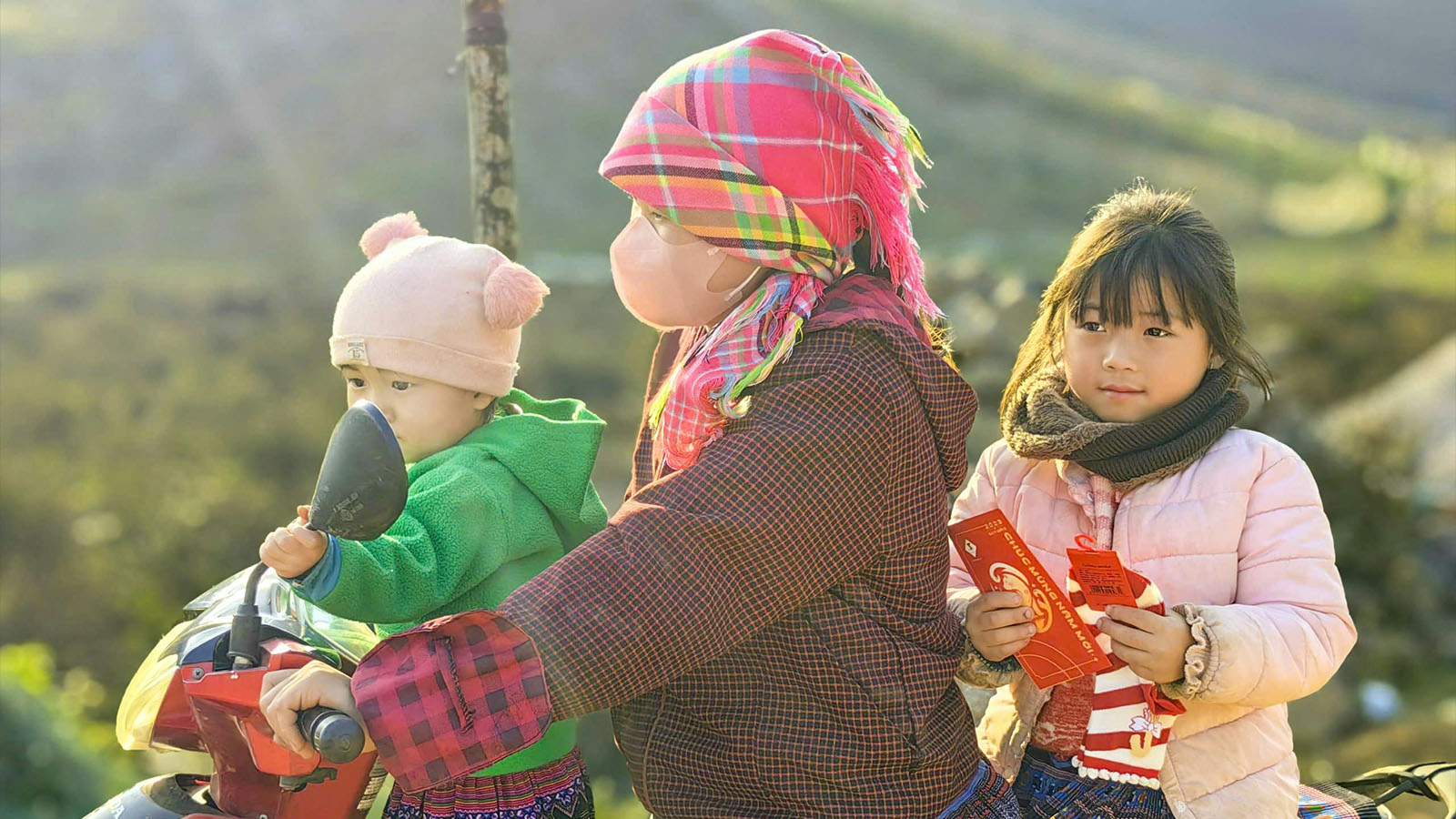




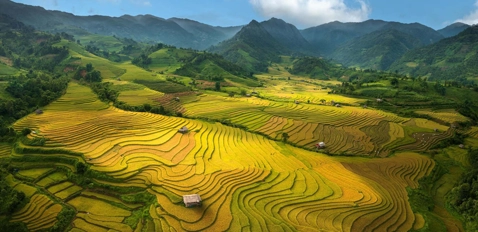

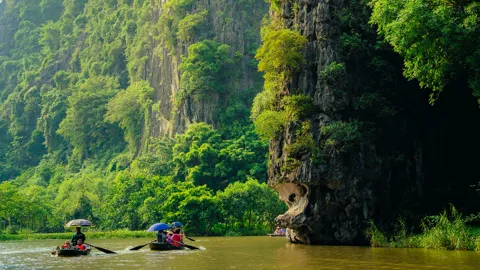





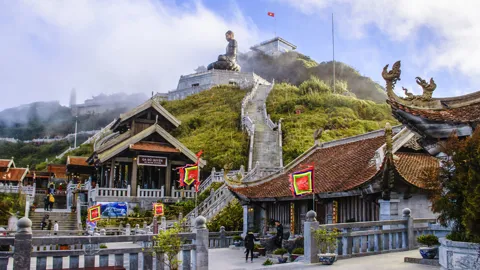




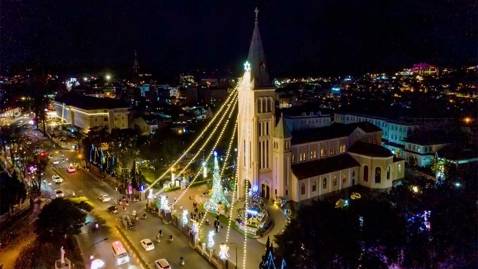
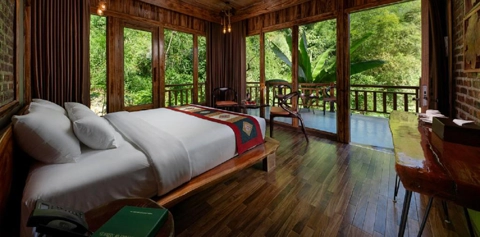
















Comment